There are 140 known natural satellites, also called moons, in orbit around the various planets in our solar system, ranging from bodies larger than our own moon to small pieces of debris.
From 1610 to 1977, Saturn was thought to be the only planet with rings. We now know that Jupiter, Uranus, and Neptune also have ring systems, although Saturn's is by far the largest. Particles in these ring systems range in size from dust to boulders to house-size, and may be rocky and/or icy.
Most of the planets also have magnetic fields, which extend into space and form a magnetosphere around each planet. These magnetospheres rotate with the planet, sweeping charged particles with them. The sun has a magnetic field, the heliosphere, which envelops our entire solar system.
Ancient astronomers believed that the Earth was the center of the universe, and that the sun and all the other stars revolved around the Earth. Copernicus proved that Earth and the other planets in our solar system orbit our sun. Little by little, we are charting the universe, and an obvious question arises: Are there other planets where life might exist? Only recently have astronomers had the tools to indirectly detect large planets around other stars in nearby solar systems.
And this is only the beginning.

On Sept. 8, 2010, a C3-class solar flare erupts from the Sun. Just as a sunspot was turning away from Earth on Sept. 8, the active region erupted, producing a solar flare and a fantastic prominence. The eruption also hurled a bright coronal mass ejection into space. (NASA/SDO)
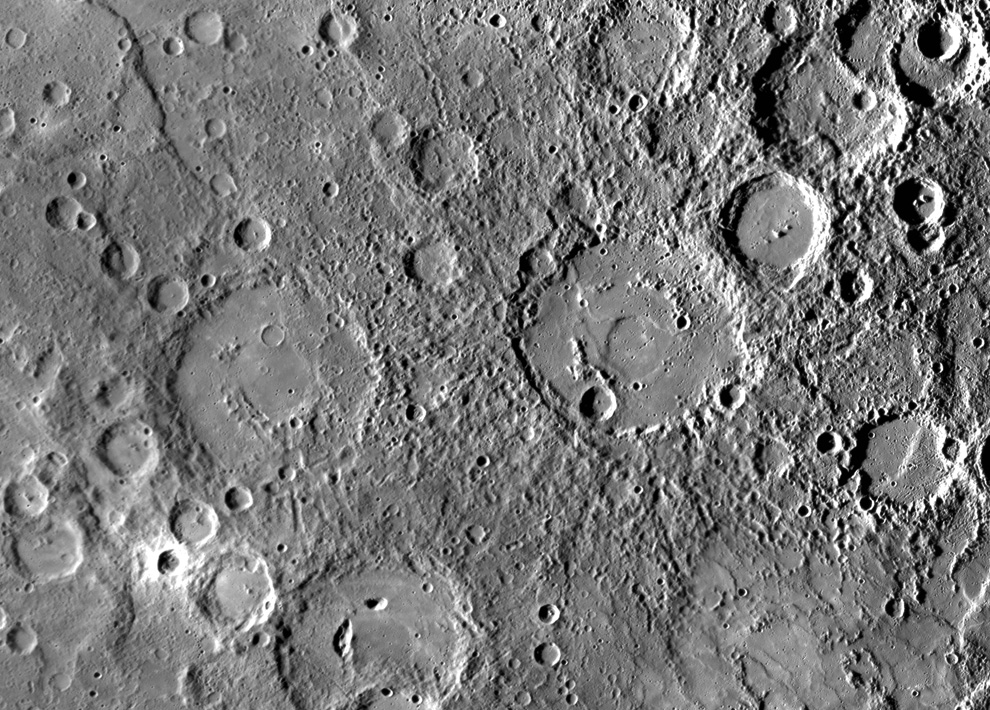
Features on the surface of Mercury, including craters Kipling (lower left) and Steichen (upper right). Image taken on September 29, 2009 by NASA's MESSENGER spacecraft. (NASA/Johns Hopkins University Applied Physics Laboratory/Carnegie Institution of Washington)
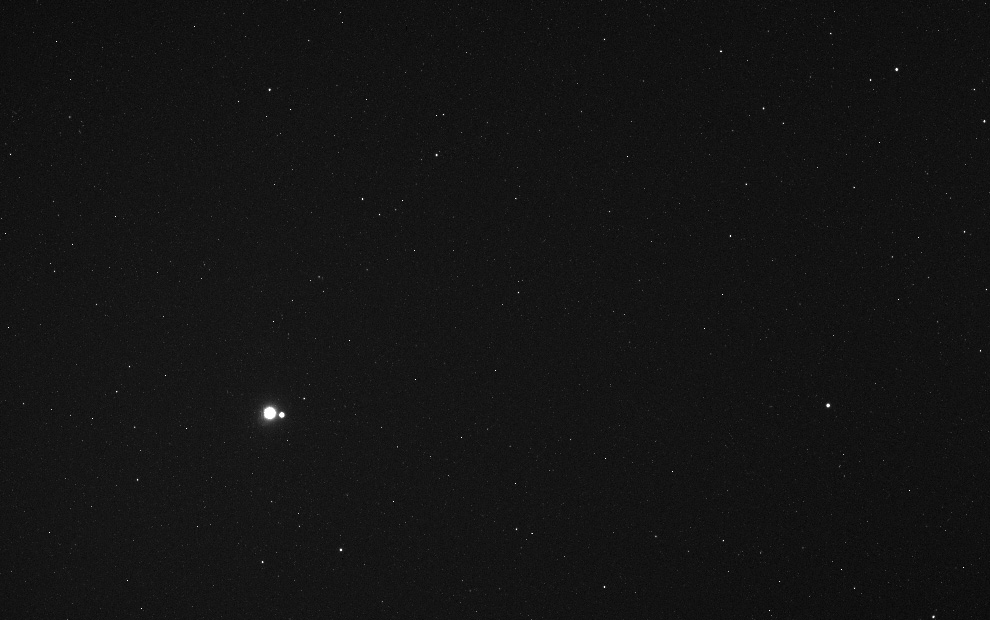
Earth and the Moon from afar - when NASA's MESSENGER spacecraft took this image on May6, 2010, it was 183 million kilometers (114 million miles) away. North is toward the bottom of the image. (NASA/Johns Hopkins University Applied Physics Laboratory/Carnegie Institution of Washington)
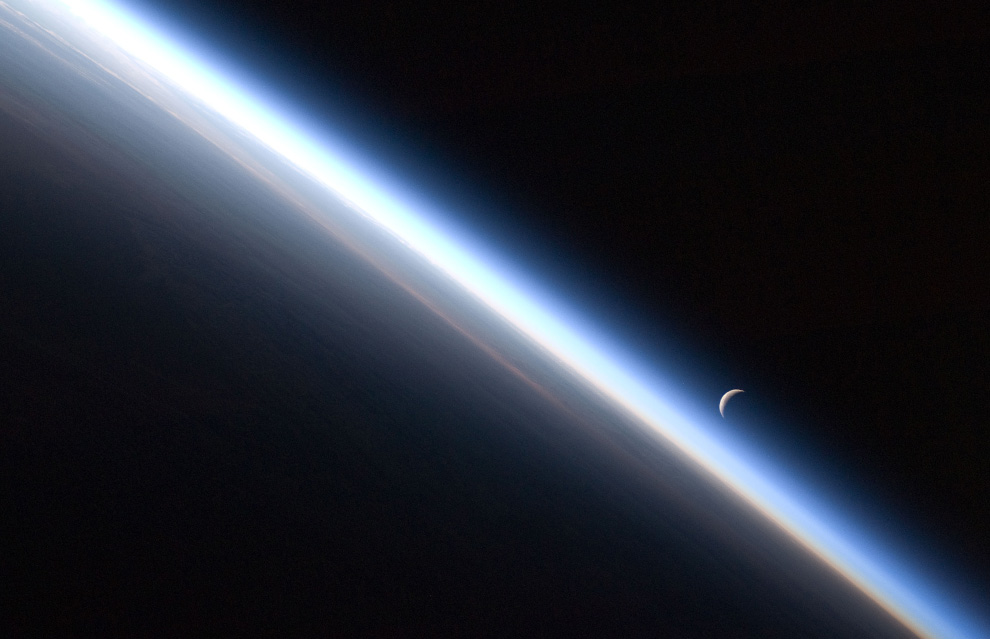
A setting last quarter crescent moon and the thin line of Earth's atmosphere are photographed by an Expedition 24 crew member as the International Space Station passes over central Asia on Sept. 4th, 2010. (NASA)
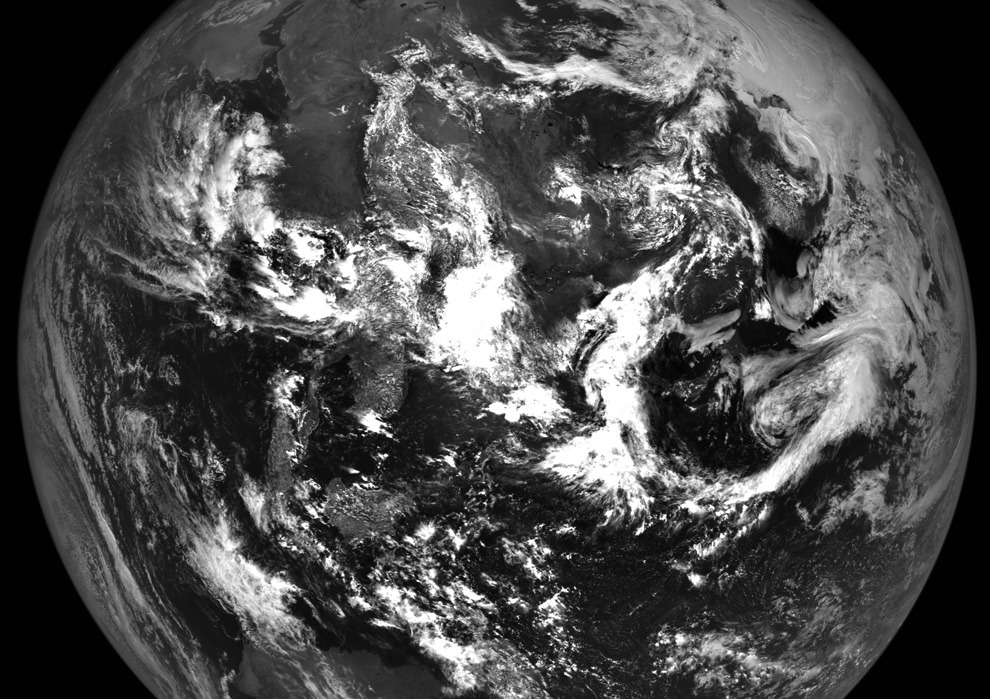
The Earth as seen from the Moon on June 12, 2010. NASA's Lunar Reconnaissance Orbiter (LROC) team created this mosaic of images snapped on 12 June 2010 during a calibration sequence. (NASA/GSFC/Arizona State University)
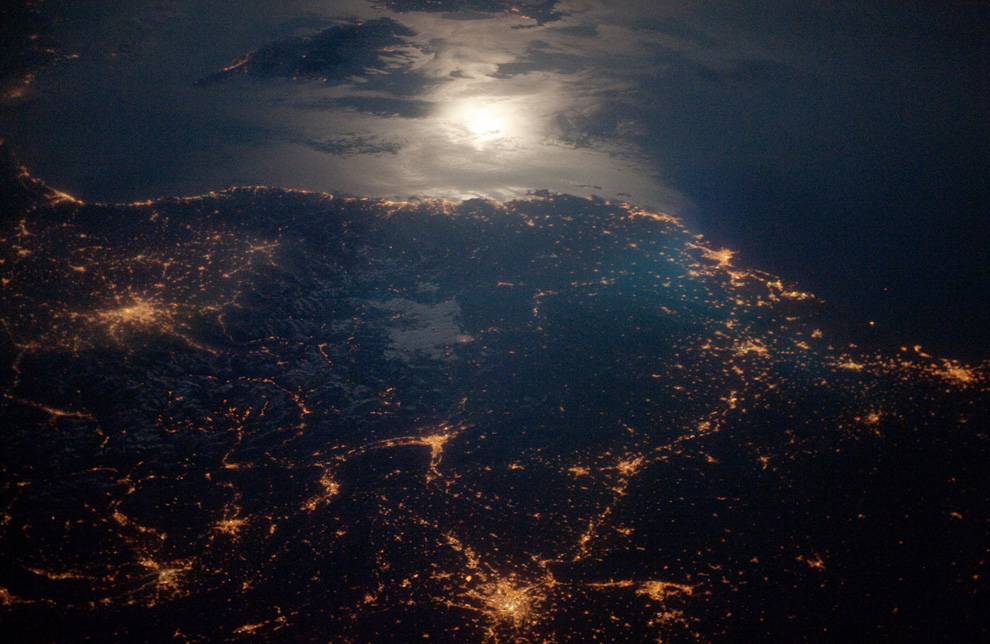
Brightly lit metropolitan areas of Torino (Italy), Lyon, and Marseille (both in France) stand out amidst numerous smaller urban areas in this dramatic photograph taken by a member of the ISS Expedition 23 crew on April 28, 2010.
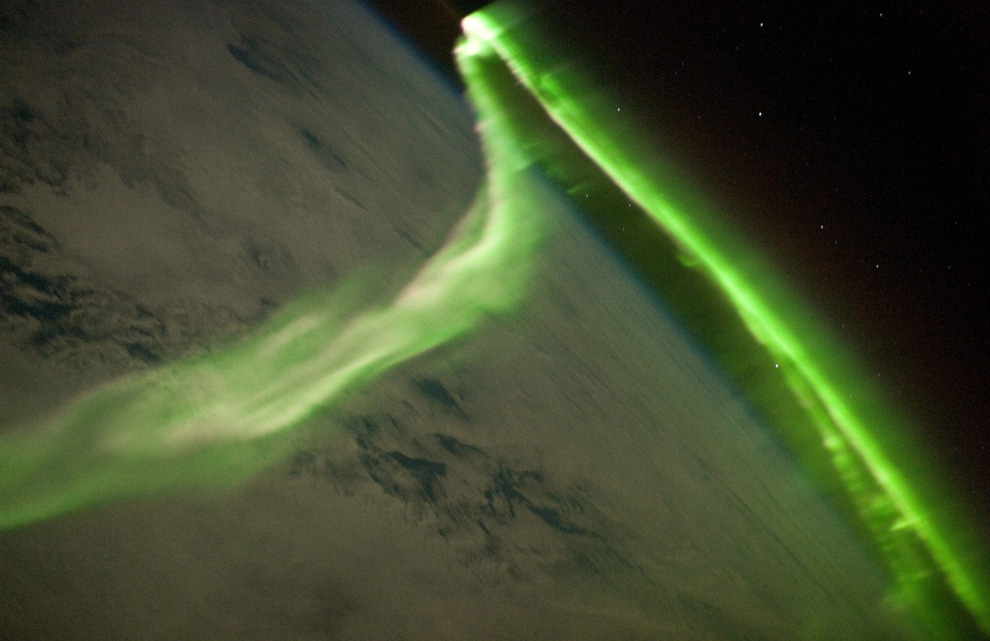
Aurora Australis seen above the Earth in this image taken by a member of the ISS Expedition 23 crew on May 29, 2010.
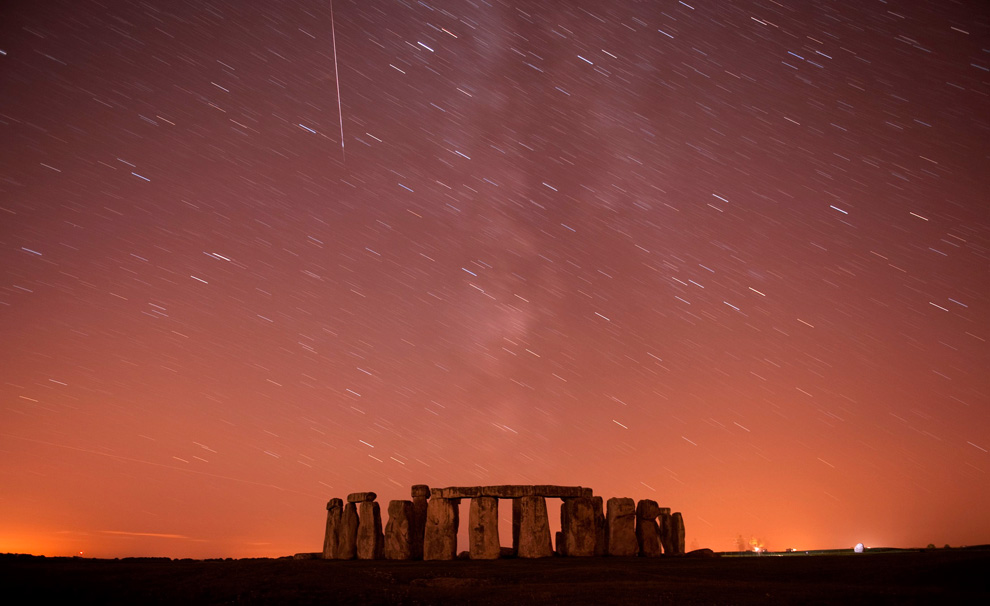
A meteor streaks past stars in the night sky over Stonehenge in Salisbury Plain, southern England on August 12, 2010. The Perseid meteor shower is sparked every August when the Earth passes through a stream of space debris left by comet Swift-Tuttle. Picture taken using a long exposure.

he Mertz Glacier flows off East Antarctica along the George V Coast, and on January 10, 2010, the Advanced Land Imager (ALI) on NASA's Earth Observing-1 (EO-1) satellite captured this true-color image of an iceberg that had broken off the glacier tongue.

Photo taken by astronaut Douglas H. Wheelock aboard the International Space Station on August 22nd, 2010. "The beauty of Italy, on a clear summer night, stretching out into the Mediterranean Sea. You can see many of the beautiful islands lit up and adorning the coastline including Capri, Sicily, and Malta. The city of Naples and Mt. Vesuvius stand out along the coast."
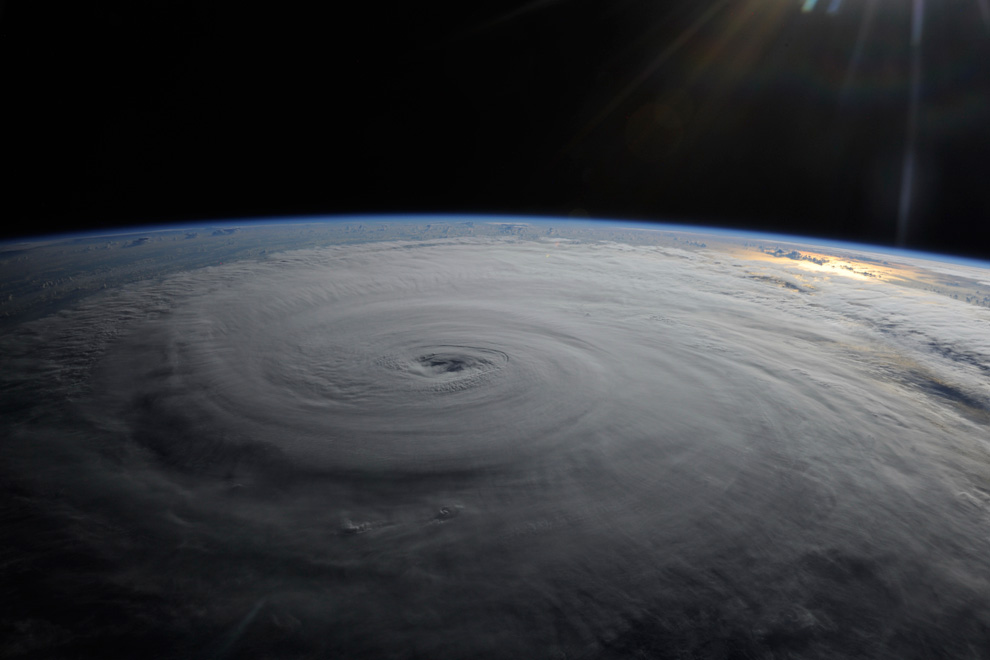
Hurricane Danielle seen from low Earth orbit on on August 28th, 2010. Photo taken by astronaut Douglas H. Wheelock aboard the International Space Station.
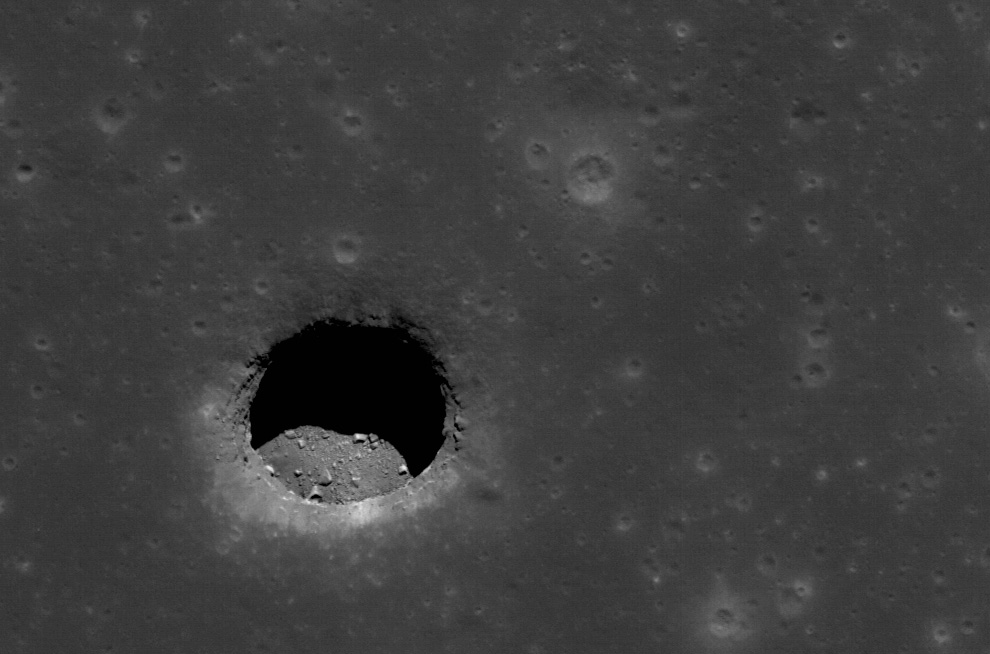
A pit in the Moon - this high Sun view of the Mare Tranquillitatis pit crater on Earth's Moon reveals boulders on an otherwise smooth floor. Image is approximately 400 meters wide, taken on April 24th, 2010.
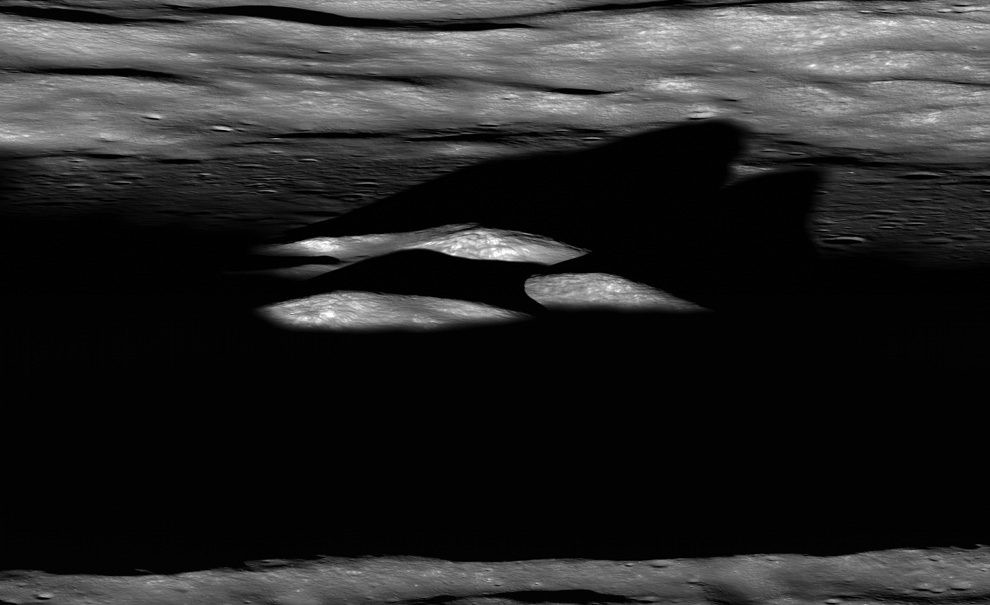
The Sun's Last rays strike the central peak of Bhabha crater on Earth's Moon just before sunset. Image taken on July 17th, 2010. (NASA/GSFC/Arizina State University)
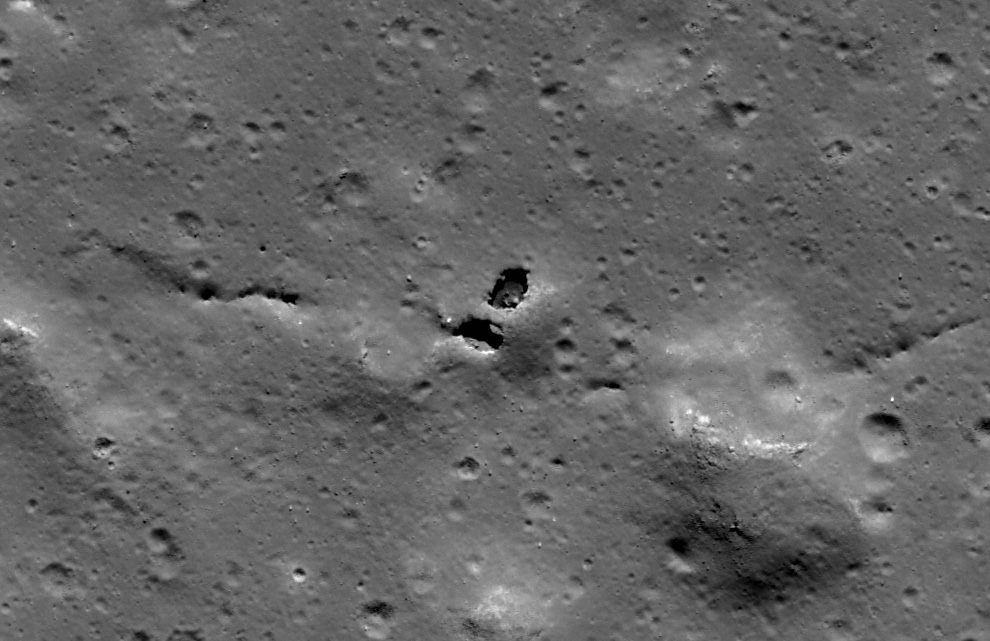
NASA's LROC spacecraft reveals a natural bridge on the Moon. From the LROC website: "How did this natural bridge form? The most likely answer is dual collapse into a lava tube." Image taken in November of 2009
The High Resolution Stereo Camera (HRSC) onboard the ESA spacecraft Mars Express took this image of Mars' moon Phobos on 7 March 2010.
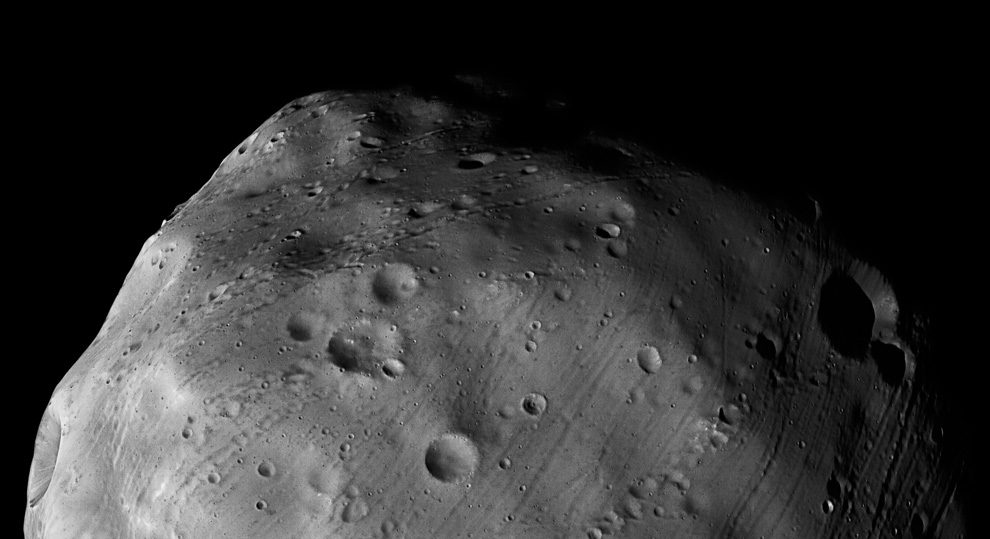
The High Resolution Stereo Camera (HRSC) onboard the ESA spacecraft Mars Express took this image of Mars' moon Phobos on 7 March 2010.
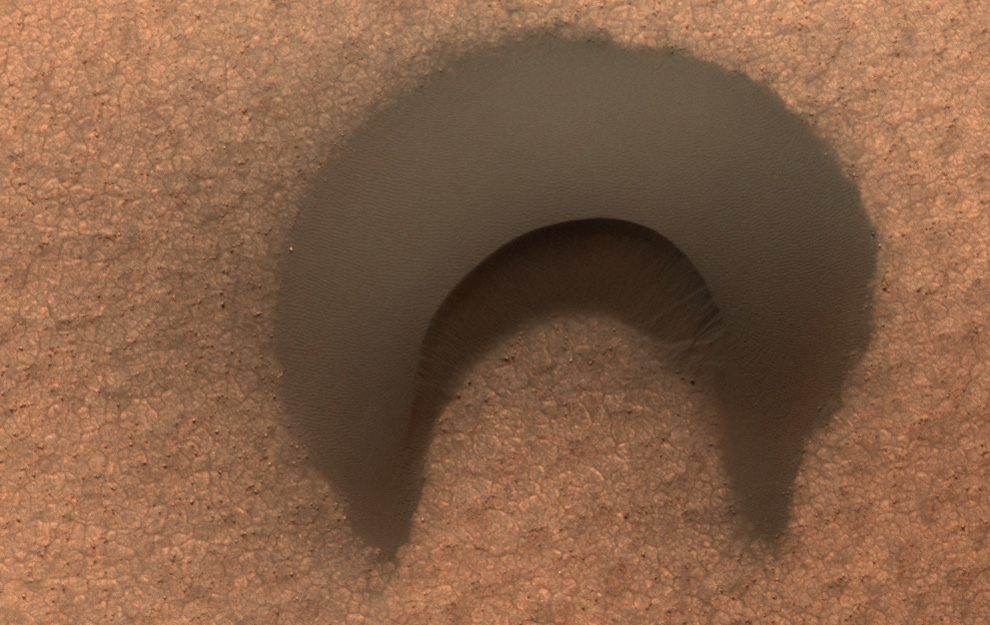
A single dune on the surface of Mars, seen by the High Resolution Imaging Science Experiment camera (HiRISE) on board the Mars Reconnaissance Orbiter (MRO) at 2:11pm local Mars time on July 9th, 2010.
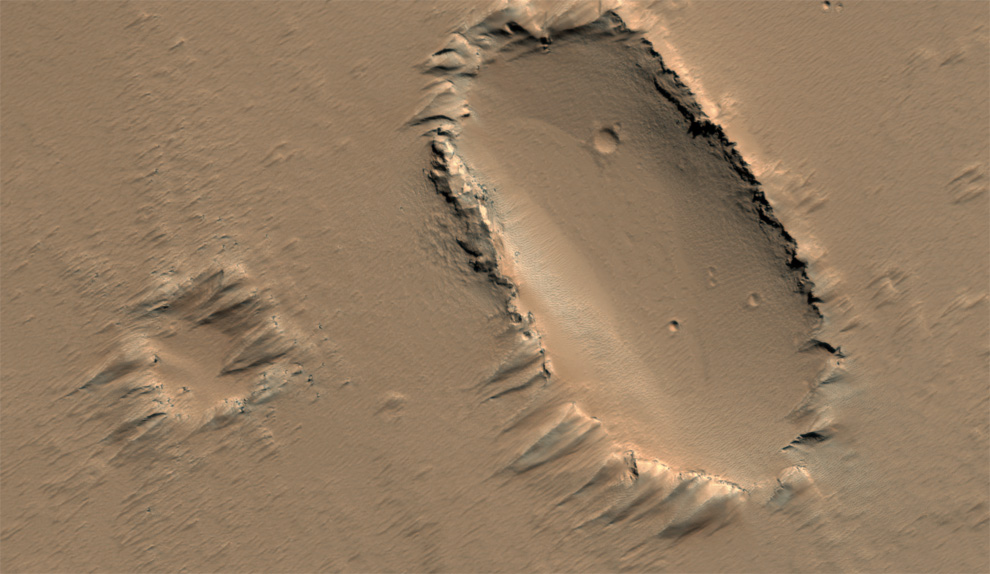
Windblown features are visible on this shield volcano structure in Mars' Tharsis Region seen by NASA's HiRISE camera on July 31st, 2010
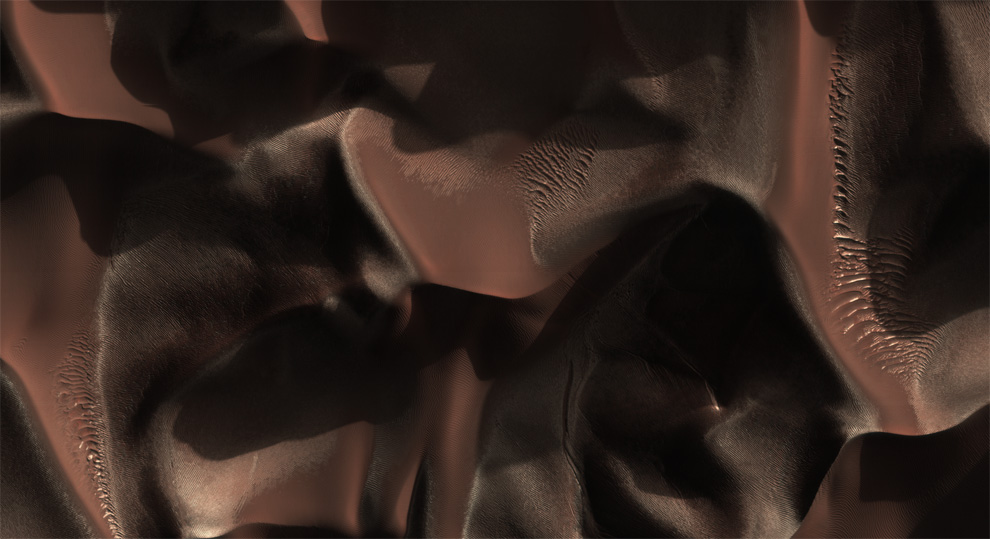
Dune gullies in Mars' Matara Crater

NASA's Mars rover Opportunity looks back at its tracks in the Martian soil on Sol 2321
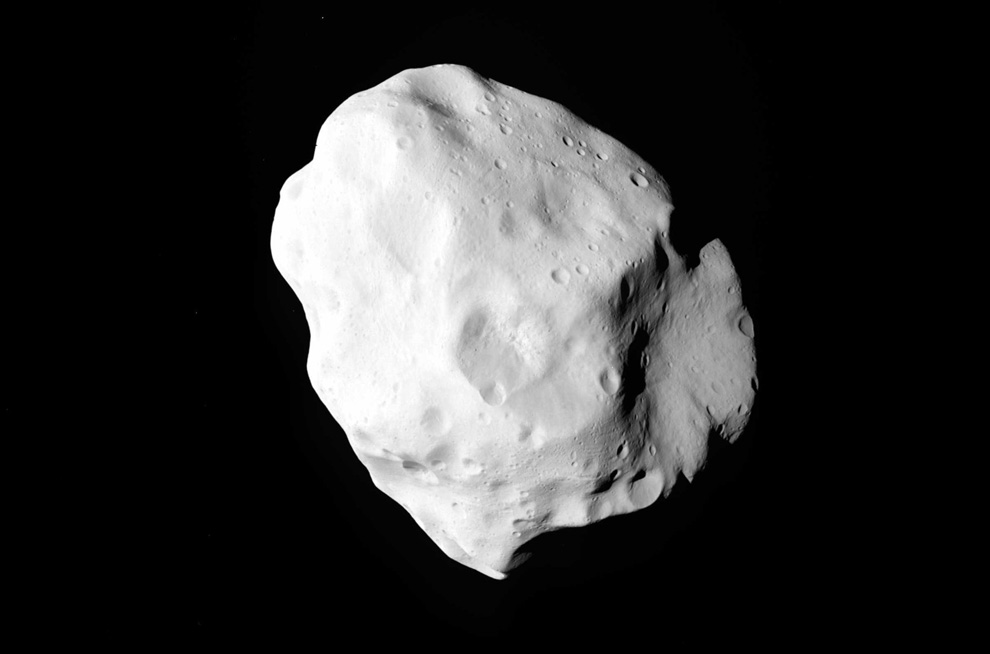
This photo provided by the European Space Agency (ESA) on July 10, 2010 shows the asteroid "Lutetia" shot by the comet chaser "Rosetta". The European Space Agency has taken the closest look yet at asteroid Lutetia in an extraordinary quest some 280 million miles in outer space between Mars and Jupiter. The comet-chaser Rosetta transmitted its first pictures from the largest asteroid ever visited by a satellite Saturday night July 10, 2010 after it flew by Lutetia as close as 1,900 miles (3,200 kilometers), ESA said in Darmstadt, Germany.
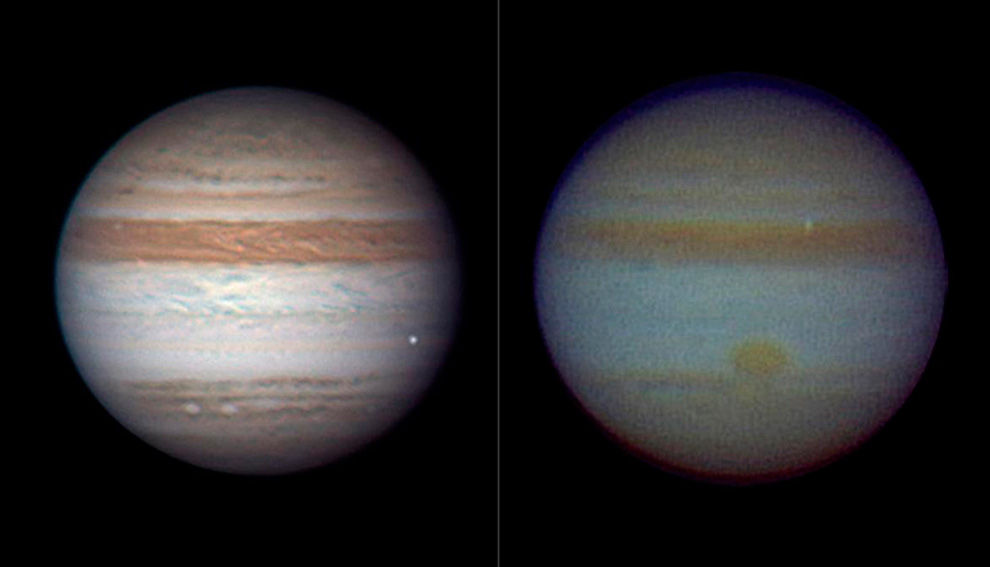
n these photographs released by NASA September 9, 2010, a fleeting bright dot on each of these images of Jupiter marks a small comet or asteroid burning up in the atmosphere. The image on the left was taken on June 3, 2010, by amateur astronomer Anthony Wesley, in Broken Hill, Australia, when he obtained the image with a 37-centimeter (14.5-inch) telescope. Wesley's image is a color composite. The fireball appears on the right side of Wesley's image. The color image on the right was taken by amateur astronomer Masayuki Tachikawa, of Kumamoto, Japan, on August 20, 2010. The fireball appears in the upper right of Tachikawa's image
Source: National Geographic, The Boston.
From 1610 to 1977, Saturn was thought to be the only planet with rings. We now know that Jupiter, Uranus, and Neptune also have ring systems, although Saturn's is by far the largest. Particles in these ring systems range in size from dust to boulders to house-size, and may be rocky and/or icy.
Most of the planets also have magnetic fields, which extend into space and form a magnetosphere around each planet. These magnetospheres rotate with the planet, sweeping charged particles with them. The sun has a magnetic field, the heliosphere, which envelops our entire solar system.
Ancient astronomers believed that the Earth was the center of the universe, and that the sun and all the other stars revolved around the Earth. Copernicus proved that Earth and the other planets in our solar system orbit our sun. Little by little, we are charting the universe, and an obvious question arises: Are there other planets where life might exist? Only recently have astronomers had the tools to indirectly detect large planets around other stars in nearby solar systems.
And this is only the beginning.
On Sept. 8, 2010, a C3-class solar flare erupts from the Sun. Just as a sunspot was turning away from Earth on Sept. 8, the active region erupted, producing a solar flare and a fantastic prominence. The eruption also hurled a bright coronal mass ejection into space. (NASA/SDO)

Features on the surface of Mercury, including craters Kipling (lower left) and Steichen (upper right). Image taken on September 29, 2009 by NASA's MESSENGER spacecraft. (NASA/Johns Hopkins University Applied Physics Laboratory/Carnegie Institution of Washington)

Earth and the Moon from afar - when NASA's MESSENGER spacecraft took this image on May6, 2010, it was 183 million kilometers (114 million miles) away. North is toward the bottom of the image. (NASA/Johns Hopkins University Applied Physics Laboratory/Carnegie Institution of Washington)

A setting last quarter crescent moon and the thin line of Earth's atmosphere are photographed by an Expedition 24 crew member as the International Space Station passes over central Asia on Sept. 4th, 2010. (NASA)

The Earth as seen from the Moon on June 12, 2010. NASA's Lunar Reconnaissance Orbiter (LROC) team created this mosaic of images snapped on 12 June 2010 during a calibration sequence. (NASA/GSFC/Arizona State University)

Brightly lit metropolitan areas of Torino (Italy), Lyon, and Marseille (both in France) stand out amidst numerous smaller urban areas in this dramatic photograph taken by a member of the ISS Expedition 23 crew on April 28, 2010.

Aurora Australis seen above the Earth in this image taken by a member of the ISS Expedition 23 crew on May 29, 2010.

A meteor streaks past stars in the night sky over Stonehenge in Salisbury Plain, southern England on August 12, 2010. The Perseid meteor shower is sparked every August when the Earth passes through a stream of space debris left by comet Swift-Tuttle. Picture taken using a long exposure.

he Mertz Glacier flows off East Antarctica along the George V Coast, and on January 10, 2010, the Advanced Land Imager (ALI) on NASA's Earth Observing-1 (EO-1) satellite captured this true-color image of an iceberg that had broken off the glacier tongue.

Photo taken by astronaut Douglas H. Wheelock aboard the International Space Station on August 22nd, 2010. "The beauty of Italy, on a clear summer night, stretching out into the Mediterranean Sea. You can see many of the beautiful islands lit up and adorning the coastline including Capri, Sicily, and Malta. The city of Naples and Mt. Vesuvius stand out along the coast."

Hurricane Danielle seen from low Earth orbit on on August 28th, 2010. Photo taken by astronaut Douglas H. Wheelock aboard the International Space Station.

A pit in the Moon - this high Sun view of the Mare Tranquillitatis pit crater on Earth's Moon reveals boulders on an otherwise smooth floor. Image is approximately 400 meters wide, taken on April 24th, 2010.

The Sun's Last rays strike the central peak of Bhabha crater on Earth's Moon just before sunset. Image taken on July 17th, 2010. (NASA/GSFC/Arizina State University)

NASA's LROC spacecraft reveals a natural bridge on the Moon. From the LROC website: "How did this natural bridge form? The most likely answer is dual collapse into a lava tube." Image taken in November of 2009
The High Resolution Stereo Camera (HRSC) onboard the ESA spacecraft Mars Express took this image of Mars' moon Phobos on 7 March 2010.

The High Resolution Stereo Camera (HRSC) onboard the ESA spacecraft Mars Express took this image of Mars' moon Phobos on 7 March 2010.

A single dune on the surface of Mars, seen by the High Resolution Imaging Science Experiment camera (HiRISE) on board the Mars Reconnaissance Orbiter (MRO) at 2:11pm local Mars time on July 9th, 2010.

Windblown features are visible on this shield volcano structure in Mars' Tharsis Region seen by NASA's HiRISE camera on July 31st, 2010

Dune gullies in Mars' Matara Crater

NASA's Mars rover Opportunity looks back at its tracks in the Martian soil on Sol 2321

This photo provided by the European Space Agency (ESA) on July 10, 2010 shows the asteroid "Lutetia" shot by the comet chaser "Rosetta". The European Space Agency has taken the closest look yet at asteroid Lutetia in an extraordinary quest some 280 million miles in outer space between Mars and Jupiter. The comet-chaser Rosetta transmitted its first pictures from the largest asteroid ever visited by a satellite Saturday night July 10, 2010 after it flew by Lutetia as close as 1,900 miles (3,200 kilometers), ESA said in Darmstadt, Germany.

n these photographs released by NASA September 9, 2010, a fleeting bright dot on each of these images of Jupiter marks a small comet or asteroid burning up in the atmosphere. The image on the left was taken on June 3, 2010, by amateur astronomer Anthony Wesley, in Broken Hill, Australia, when he obtained the image with a 37-centimeter (14.5-inch) telescope. Wesley's image is a color composite. The fireball appears on the right side of Wesley's image. The color image on the right was taken by amateur astronomer Masayuki Tachikawa, of Kumamoto, Japan, on August 20, 2010. The fireball appears in the upper right of Tachikawa's image
Source: National Geographic, The Boston.

No comments:
Post a Comment